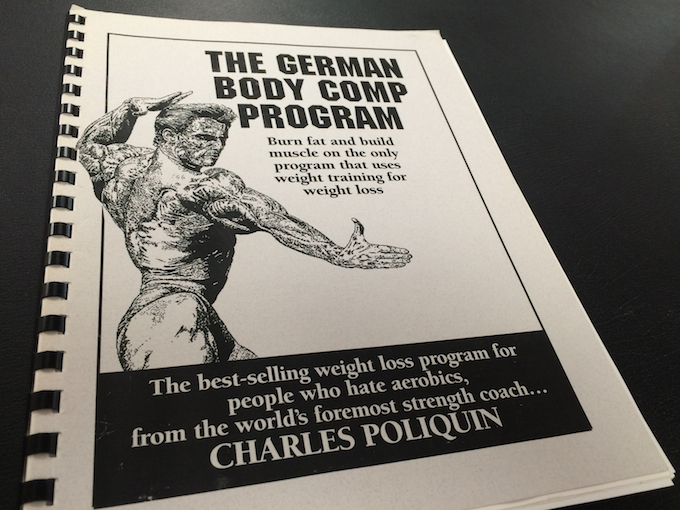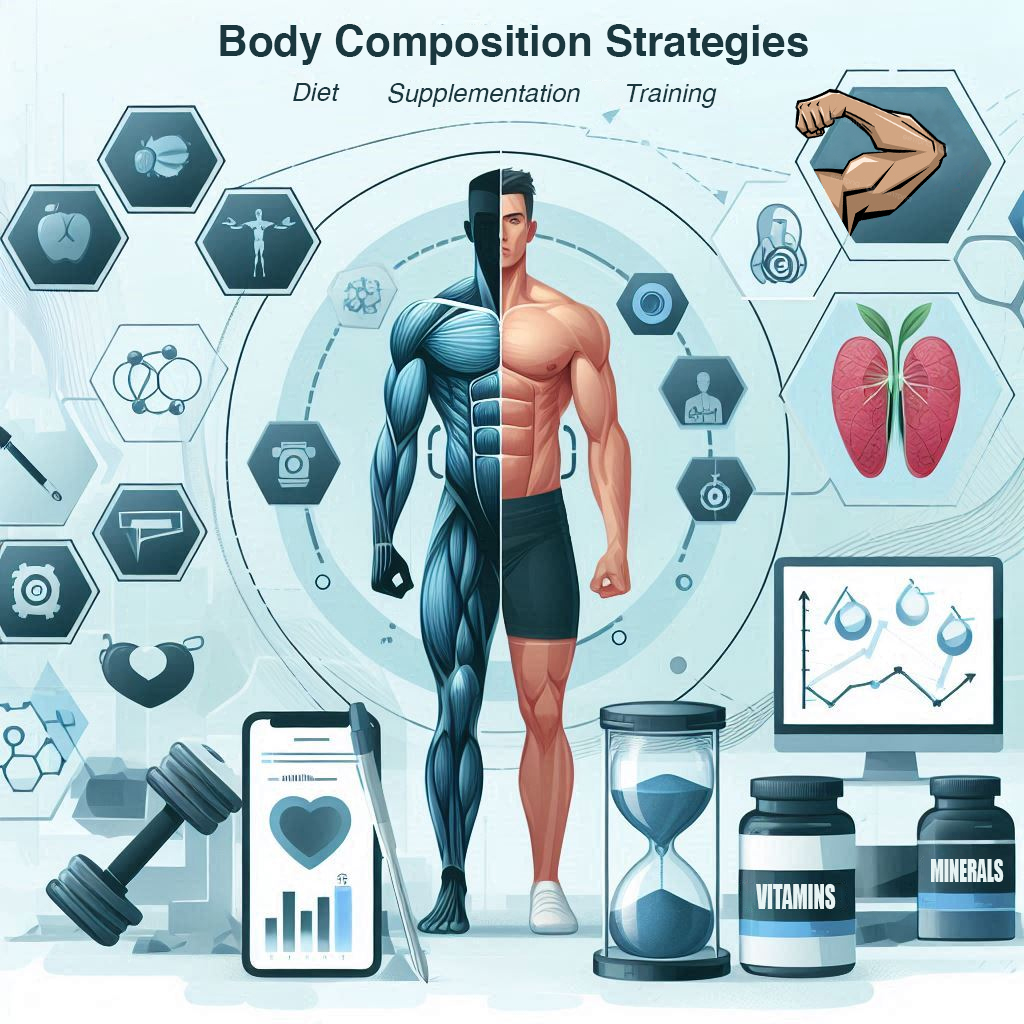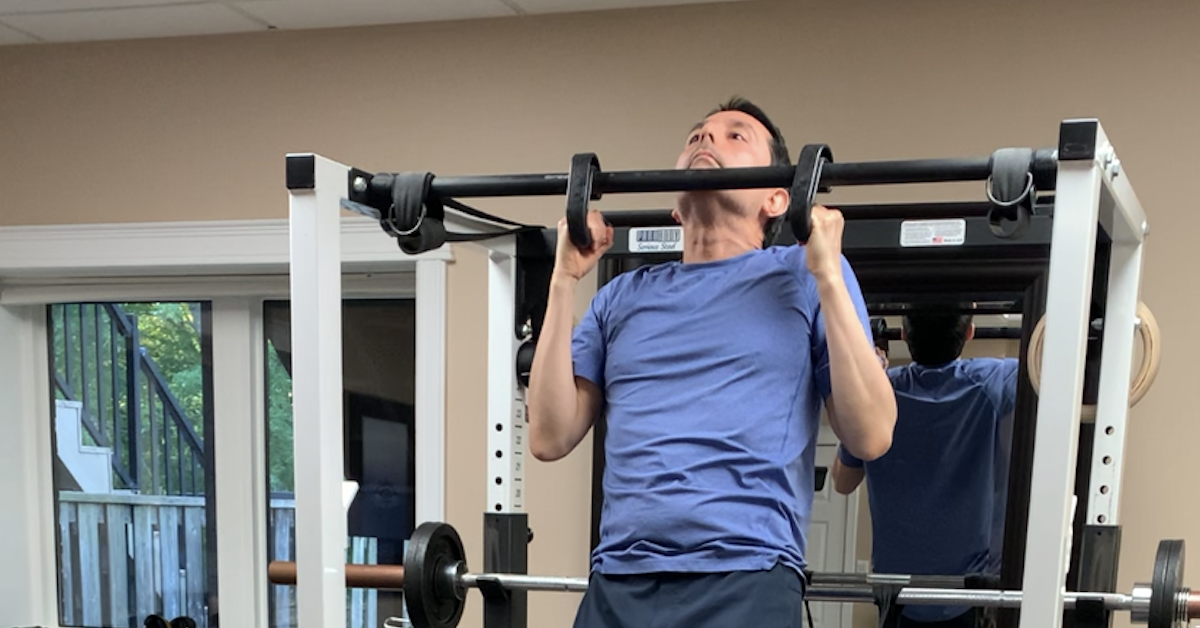Circuit training is a proven strength and conditioning method where you perform a series of exercises in rotation with varying loads and equipment and minimal rest. A circuit may be repeated several times depending on your training status and the number of exercises involved.
This form of training provides variety and is useful when training children, beginners, large groups, or when traveling. However, circuit training can also be powerful for advanced trainees looking to get lean—when conducted in a specific manner for optimal results.
The PHA Advantage
Alternating between sets of upper and lower body exercises allows you to “decongest” one half of the body by circulating fluid to the other half, improving recovery and performance. This is the premise behind Bob Gajda’s Peripheral Heart Action (PHA) training system. As a result, you can use protocols involving higher reps and lower rest periods. These workouts produce high lactate levels and significant fatigue, but you’re able to manage it better due to the upper-lower “zigzag” sequence of exercises. Gajda contends that the boost to circulation and recovery through PHA circuits can result in greater lifting performance than using straight sets.
The bottom line with PHA is to work muscles that are far apart from each other, take little rest, and keep the work moving around the body. This type of training is intense, especially when you’re not used to it, so be prepared. When you show up to the gym, it’s time to work!
Here are three circuit-training programs that’ll get you “lean and mean” in no time. The intensity increases from one program to the next. Start with the first one and work your way up to the third. You can do all three in succession before inserting a strength/hypertrophy phase, or incorporate a strength/hypertrophy phase after completing each individual circuit-training program. I prefer the latter approach since you maintain a greater level of muscle mass and strength, but the former is useful if you have significant fat to shed. Pick your approach and commit to it.
Program #1 – High Reps, Minimal Rest
Circuit #1
- Back Squat: 3 x 15-20 @ 1010, 10s
- Flat Dumbbell Press: 3 x 15-20 @ 1010, 10s
- Prone Leg Curl: 3 x 15-20 @ 1010, 10s
- Standing Military Press: 3 x 15-20 @ 1010, 10s
- Supine Cable Knee-In: 3 x 15-20 @ 1010, 10s
- Bent-Over EZ-Bar Row: 3 x 15-20 @ 1010, 180s
Circuit #2
- Incline Dumbbell Press: 3 x 15-20 @ 1010, 10s
- Seated Leg Extension: 3 x 15-20 @ 1010, 10s
- Front Lat Pulldown: 3 x 15-20 @ 1010, 10s
- Standing Calf Raise: 3 x 15-20 @ 1010, 10s
- Flat EZ-Bar Triceps Extension: 3 x 15-20 @ 1010, 10s
- Semi-Stiff-Leg Barbell Deadlift: 3 x 15-20 @ 1010, 180s
PHA can be quite effective, but the reps are a touch high and the rest interval a touch low for most lifters who move significant weight. If you normally train for relative strength and then jump into PHA without making appropriate adjustments, you won’t survive past one or two rounds. But if implemented correctly, PHA can rapidly improve muscular endurance, work capacity, body composition, and cardiorespiratory health.
This is a revised version of PHA as presented in the Encyclopedia of Bodybuilding. There’s only ten seconds of rest between each exercise in a circuit—just enough time to move from one station to the next—and then three minutes of rest after completing the circuit. Try to complete three sets of each circuit, so start conservatively. Keep something in reserve and don’t use maximum loads. Do this workout three days a week on non-consecutive days. For example, training on Monday, Wednesday, and Friday is popular since it frees up the weekend.
It would be nice to end it there and move on to Program #2, but unless you’re a beginner, you’ll face a challenge. Anyone with at least a year or two of serious and consistent training will struggle to complete this program three times a week for a month. Even the second workout would be tough, and you’ll dread going to the gym.
If you’ve built up decent strength over the years, even keeping some in reserve when starting this routine, 48 hours simply isn’t enough recovery. A two-day system is required where you alternate between two workouts each session. This provides ample recovery and allows success over four weeks. Here’s what Day 2 would look like:
Circuit #1
- Wide-Stance Back Squat: 3 x 15-20 @ 1010, 10s
- Parallel-Bar or Bench Dip: 3 x 15-20 @ 1010, 10s
- Reverse Hyperextension: 3 x 15-20 @ 1010, 10s
- Seated Arnold Press: 3 x 15-20 @ 1010, 10s
- Swiss Ball Crunch: 3 x 15-20 @ 1010, 10s
- Seated Cable Row: 3 x 15-20 @ 1010, 180s
Circuit #2
- Incline Barbell Press: 3 x 15-20 @ 1010, 10s
- Seated Leg Press: 3 x 15-20 @ 1010, 10s
- Chin-Up or Reverse-Grip Pulldown: 3 x 15-20 @ 1010, 10s
- Seated Calf Raise: 3 x 15-20 @ 1010, 10s
- Standing Rope Pressdown: 3 x 15-20 @ 1010, 10s
- Back Extension: 3 x 15-20 @ 1010, 180s
Program #2 – Moderate Reps, Very Low Rest
Day 1
A1. Dumbbell Lunge: 4 x 12-15 @ 20X0, 30s
A2. Sternum Lat Pulldown: 4 x 10-12 @ 3011, 30s
A3. Prone Feet-Neutral Leg Curl: 4 x 10-12 @ 4010, 30s
A4. Decline Dumbbell Triceps Extension: 4 x 10-12 @ 4010, 30s
B1. Back Squat: 3 x 12-15 @ 3010, 30s
B2. One-Arm Cable Row: 3 x 10-12 @ 4010, 30s
B3. Seated Good Morning: 3 x 12-15 @ 3010, 30s
B4. Standing Close-Grip Barbell Curl: 3 x 10-12 @ 4010, 30s
Day 2
A1. Side Back Step-Up: 4 x 12-15 @ 20X0, 30s
A2. Wide Neutral-Grip Lat Pulldown: 4 x 10-12 @ 3011, 30s
A3. Semi-Stiff-Leg Dumbbell Deadlift: 4 x 10-12 @ 4010, 30s
A4. Seated EZ-Bar French Press: 4 x 10-12 @ 3110, 30s
B1. Hack Squat: 3 x 12-15 @ 3010, 30s
B2. Seated Rope Row to Neck: 3 x 10-12 @ 2012, 30s
B3. Standing Calf Raise: 3 x 10-12 @ 2210, 30s
B4. Flat Neutral-Grip Dumbbell Press: 3 x 10-12 @ 4010, 30s
Consider PHA as the predecessor to Charles Poliquin’s German Body Comp system (where Gajda focused on the cardiovascular benefits, Poliquin on the hormonal advantage). This is a revised version of the last two workouts from Poliquin’s original spiral-bound text The German Body Comp Program published in 1997. Many things have changed since then, some minor and some major. For example, a minor change is that three-digit tempos were used then versus four-digit tempos today. A major change involves the carb-heavy diet recommendations in the book, which contrast sharply with the meat-and-nuts breakfast that Poliquin later became famous for.

Each workout is essentially two circuits of four exercises, similar to the PHA system except with greater rest and lower rep ranges. The book presents each day as a separate workout to be performed three times a week for three weeks, but as mentioned previously, that may only suit beginners. For intermediate or advanced trainees, alternate between Day 1 and Day 2 each session. You should be able to last up to a month on this program (six training exposures per day) and make progress each workout before requiring a change.
Program #3 – Moderate Reps, Low Rest
Day 1
- Mid-Supinated-Grip Chin-Up: 4 x 8-10 @ 2-0-X-0, 60s
- Incline Pronated-Grip Dumbbell Press: 4 x 8-10 @ 2-0-X-0, 60s
- Heels-Elevated Back Squat: 4 x 8-10 @ 2-0-X-0, 60s
- Incline Hammer Curl: 4 x 8-10 @ 2-0-X-0, 60s
- Parallel-Bar Dip: 4 x 8-10 @ 2-0-X-0, 60s
- Dumbbell Step-Up: 4 x 8-10 @ 2-0-X-0, 60s
Day 2
- Flat Neutral-Grip Dumbbell Press: 4 x 8-10 @ 2-0-X-0, 60s
- Seated Neutral-Grip Cable Row: 4 x 8-10 @ 2-0-X-0, 60s
- Low-Handle Hex-Bar Deadlift: 4 x 8-10 @ 2-0-X-0, 60s
- Standing V-Handle Pressdown: 4 x 8-10 @ 2-0-X-0, 60s
- Seated Preacher EZ-bar Reverse Curl: 4 x 8-10 @ 2-0-X-0, 60s
- Rear-Foot-Elevated Back Split Squat: 4 x 8-10 @ 2-0-X-0, 60s
A few years ago, I created a circuit training system called Modern Muscle Moulding designed primarily to build muscle. Yes, a circuit-based program that develops serious muscle through sheer volume.
This system can be modified slightly to encourage more fat loss while still building muscle. The template is straightforward: two upper body exercises (press, chin-up, and/or row) followed by a lower body exercise (squat or deadlift), then another two upper body exercises (elbow flexion and extension) followed by a different lower body exercise (unilateral or single-joint movement). You can insert whichever exercises you prefer, but this structure offers several advantages.
First, it allows you to congest the upper body (front and back) with antagonist movements and then decongest it with a lower body movement. You then decongest the lower body by moving fluid back to the upper body and so on, all to improve recovery and performance.
Second, one of the biggest challenges with full-body routines for advanced trainees is the stress on the lower body. Often, even with a two-day system, the legs struggle to keep up. Why? The thighs, being the largest body part, simply require more recovery than other muscle groups. To accommodate this variable recovery among body parts, you must reduce work for the thighs in a full-body routine so all muscles recover at similar rates. Using a 2:1 ratio of upper to lower body movements achieves this.
You’ll notice that the eccentric tempo is quicker than typical. Usually, slower lowering speeds are used with lower rep ranges and faster speeds with higher reps (or you’d spend all day in the gym). In theory that makes sense:
lower reps + slower speeds
= longer time under tension
= greater muscle mass
= higher metabolic rate
= lower body fat
In practice, however, it doesn’t quite work that way. Slower eccentric speeds create greater muscle fiber damage and soreness, potentially delaying recovery and making it difficult to train effectively two days later. Branched-chain amino acids help, but through trial and error, I’ve found faster tempos work better. The advantage is that you can use heavier loads, benefiting in two ways: less soreness and higher workloads.
This workout is deceptively challenging. When you reach maximal loads after the first week, it becomes increasingly difficult. The first round or two feel manageable, the third round becomes tough, and the fourth is grueling!
Practical Implementation Considerations
Circuit training can be an excellent way to improve body composition. However, there are logistical challenges. This approach doesn’t work well in busy gyms—you can’t occupy multiple pieces of equipment and expect to maintain your timing without interruption. Try training during off-peak hours or consider a private facility if possible. You may need to adapt the programs to your situation by sequencing exercises that are close together or reducing the number of exercises per circuit. With some creativity, you can make it work while respecting the principles outlined above.
A final note on high-intensity interval training (HIIT) and diet. If your goal is improved body composition, adding some HIIT helps, and nutrition is crucial.
I recommend 1-4 HIIT sessions weekly depending on individual circumstances. For example, I typically maintain a four-pack in spring and fall. In winter, my focus shifts to strength and size, so I gain weight and that four-pack becomes a two-pack. In summer, I lean out and achieve a six-pack. For me, one or two HIIT sessions weekly works perfectly—anything more sacrifices too much size and strength. My HIIT consists of real-world outdoor activities: one session includes a medicine ball circuit at a soccer field followed by high-rep chin-ups and pole climbs at a playground, while another involves sprinting at a track.
Regarding diet, two quotes are worth remembering:
“Abs are made in the kitchen, not in the gym!”
“If you want carbs, earn them!”
Bottom Line
If you’ve built significant strength and size over the years but that muscle is covered with fat and climbing stairs leaves you breathless, circuit training could be your solution.
Note: For more tips on getting lean, check out my Body Composition Strategies webinar and my Lean & Mean book.

Body Composition Strategies
Body Composition Strategies reveals the exact methods experts use to help clients shed fat and get lean—fast. In this on-demand webinar, you’ll learn powerful diet, training, and supplementation protocols backed by real-world case studies.
Your $20 investment includes:
-
Over 40 minutes of streaming video (divided into 5 segments)
-
A 38-page slide presentation (PDF)
-
3 sample diet plans + 3 food rotation guides
-
3 beginner and 3 advanced training programs
-
Bonus: The most informative breakfast article you’ll ever read
Plus, it’s all backed by a 30-day money-back guarantee.

From Zero to Two: Leo’s Chin-Up Breakthrough
When Leo began training with me in September 2024, our first goal was to improve body composition — lose fat,

Resistance Training Foundations: How to Progress Safely and Build Real Strength
Resistance training isn’t just for bodybuilders. Whether you’re just starting out, returning after a break, or training for performance, knowing

Neck Extensions Before Arm Curls: Unlock More Strength
When most people warm up for arm curls, they’ll hit a few light sets or maybe stretch out a bit.
follow
Error: No feed with the ID 2 found.
Please go to the Instagram Feed settings page to create a feed.
